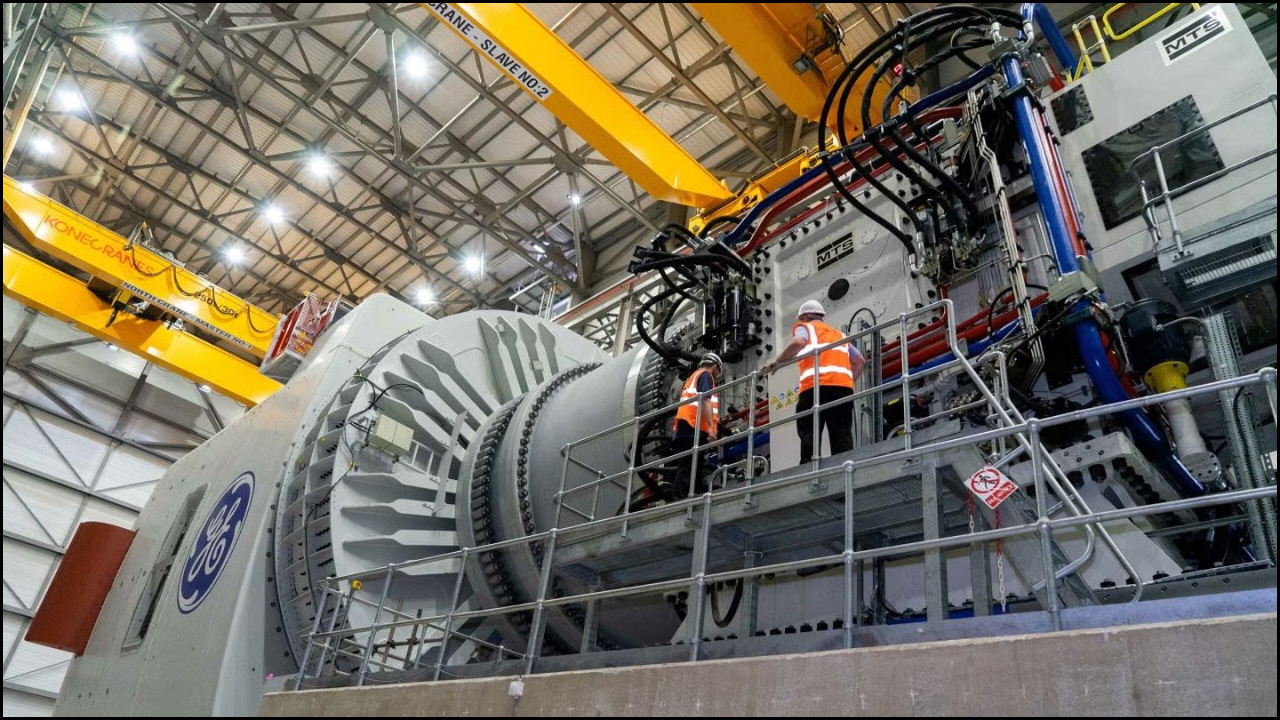
Global demand for sustainable and renewable energy solutions has increased as nations seek to reduce carbon emissions and combat climate change. Two leading research funding organizations—the National Natural Science Foundation of China (NSFC) and the Engineering and Physical Sciences Research Council (EPSRC) of the United Kingdom—play a pivotal role in advancing this mission. Their collaboration and individual initiatives have significantly influenced the development of clean technologies, renewable energy systems, and sustainable infrastructure. The partnership between NSFC and EPSRC demonstrates how strategic research funding and international cooperation can accelerate innovation in the global energy transition.
Table of Contents
Overview of NSFC and EPSRC
Both NSFC and EPSRC are national research funding bodies that support scientific and technological advancements through grants and partnerships.
- NSFC (National Natural Science Foundation of China) supports basic and applied research in natural sciences and engineering fields in China.
- EPSRC (Engineering and Physical Sciences Research Council) funds UK-based research in engineering, physical sciences, and technology to promote industrial innovation.
- Both organizations collaborate to strengthen global research capacity and foster international energy innovation.
- Their joint programs focus on renewable energy, carbon reduction, sustainable materials, and smart grids.
- The partnership aligns with global sustainability goals and promotes low-carbon economic growth.
Primary Objectives of NSFC and EPSRC in Sustainable Energy
| Objective | Description |
|---|---|
| Advance Clean Energy Research | Support the development of wind, solar, and bioenergy technologies. |
| Encourage International Collaboration | Promote research partnerships between UK and Chinese scientists. |
| Support Sustainable Infrastructure | Develop innovative materials and technologies for energy-efficient systems. |
| Enhance Energy Security | Strengthen global resilience through renewable energy diversification. |
| Foster Industrial Application | Translate academic research into commercial clean energy solutions. |
Joint NSFC–EPSRC Partnership Framework
The partnership between NSFC and EPSRC is designed to promote long-term cooperation in science and engineering.
- The UK–China Research and Innovation Partnership Fund (Newton Fund) serves as a key platform for joint funding.
- Both agencies co-finance research programs in equal proportion.
- Projects are reviewed through peer evaluation to ensure scientific excellence.
- Collaboration covers areas like offshore renewable energy, smart energy systems, carbon capture, and energy storage.
- The partnership encourages student exchanges, academic mobility, and industry participation.
Focus Areas of Sustainable Energy Research
| Research Area | Key Initiatives | Expected Outcome |
|---|---|---|
| Offshore Renewable Energy | Design of floating wind turbines and marine energy devices | Enhanced offshore power generation capacity |
| Energy Storage Systems | Development of advanced batteries and hydrogen storage | Improved reliability of renewable energy supply |
| Smart Grids and AI Integration | Use of digital sensors and predictive analytics | Efficient energy distribution and grid resilience |
| Carbon Capture and Utilization (CCU) | Conversion of CO₂ into valuable products | Reduction of industrial emissions |
| Sustainable Materials | Research on recyclable and lightweight materials | Increased durability and reduced carbon footprint |
Contribution of NSFC to Sustainable Energy
NSFC has played a leading role in advancing China’s renewable energy research and infrastructure development.
- Focuses on basic research that underpins applied innovations in energy technologies.
- Funds large-scale projects on solar photovoltaics, tidal energy, and advanced fuel cells.
- Supports interdisciplinary research combining physics, materials science, and engineering.
- Promotes open data sharing and international collaboration for climate solutions.
- Encourages partnerships with Chinese universities and energy industries.
Examples of NSFC Energy Research Programs
| Program | Focus Area | Impact |
|---|---|---|
| Renewable Energy and Hydrogen Technologies Program | Hydrogen fuel cells and solar-powered systems | Acceleration of clean fuel adoption in China |
| Low-Carbon Technology Research Initiative | Energy efficiency and emission control | Reduction of national carbon footprint |
| Marine and Offshore Energy Research | Tidal, wave, and offshore wind projects | Expansion of coastal renewable power sources |
| Smart Energy Management Systems | AI-based monitoring and digital grid systems | Improved energy forecasting and stability |
Contribution of EPSRC to Sustainable Energy
EPSRC funds research and innovation projects that advance the UK’s clean energy transition.
- Focuses on engineering and applied science research for sustainable energy systems.
- Supports university–industry collaborations to commercialize green technologies.
- Invests in infrastructure for net-zero carbon and circular economy initiatives.
- Provides funding for postgraduate training in renewable energy fields.
- Encourages cross-disciplinary innovation combining chemistry, computing, and engineering.
Examples of EPSRC Energy Research Programs
| Program | Focus Area | Impact |
|---|---|---|
| Energy Supergen Hub | Research collaboration in offshore wind, hydrogen, and bioenergy | Strengthened UK leadership in clean energy |
| Prosperity Partnership Program | Academia–industry partnerships in energy technologies | Commercial deployment of renewable systems |
| Decarbonization of Heat Challenge | Low-carbon heating and energy-efficient housing | Reduction in national residential emissions |
| AI for Energy Systems Initiative | Data-driven energy optimization | Improved operational efficiency of power grids |
Impact of Joint NSFC–EPSRC Projects
Collaborative research between NSFC and EPSRC has generated transformative outcomes in the global energy sector.
- Creation of hybrid renewable systems integrating wind, solar, and hydrogen.
- Development of predictive models for offshore wind performance.
- Implementation of smart grids capable of handling variable renewable output.
- Reduction of maintenance costs through AI-based monitoring systems.
- Strengthened research capacity and knowledge exchange between nations.
Capacity Building and Knowledge Transfer
A key strength of the NSFC–EPSRC collaboration lies in human resource development and skill enhancement.
- Joint PhD programs promote long-term academic partnerships.
- Exchange schemes allow early-career researchers to gain global experience.
- Workshops and conferences support policy dialogue on sustainable energy.
- Industrial internships link research with practical applications.
- Cross-cultural collaboration fosters global perspectives on energy challenges.
Alignment with Global Sustainability Goals
Both organizations align their initiatives with the UN Sustainable Development Goals (SDGs), particularly in clean energy and climate action.
| SDG Goal | Contribution |
|---|---|
| SDG 7 | Expansion of affordable and clean energy access |
| SDG 9 | Development of sustainable industrial technologies |
| SDG 11 | Promotion of energy-efficient urban infrastructure |
| SDG 13 | Acceleration of climate action through low-carbon innovation |
| SDG 17 | Strengthened global research partnerships and cooperation |
Challenges in International Research Collaboration
| Challenge | Description | Possible Solution |
|---|---|---|
| Cultural and Administrative Differences | Different academic structures and funding systems | Establish unified project management frameworks |
| Data Sharing and Intellectual Property | Legal restrictions on research data | Develop joint data governance policies |
| Funding Imbalance | Unequal contributions from partners | Encourage equitable co-financing mechanisms |
| Technological Compatibility | Differences in research infrastructure | Promote standardization and interoperability |
| Sustainability of Collaboration | Maintaining momentum after project completion | Create long-term funding agreements |
Impact on Global Energy Research Landscape
The NSFC–EPSRC partnership has become a model for bilateral cooperation in science and technology.
- Encouraged cross-border innovation through shared expertise and resources.
- Improved efficiency and scalability of renewable energy systems.
- Enabled breakthroughs in battery materials, wind design, and hydrogen storage.
- Established strong links between academic research and industrial application.
- Contributed to the creation of a resilient, low-carbon global energy network.
Future Prospects for NSFC and EPSRC Cooperation
The evolving energy landscape offers new opportunities for deeper collaboration.
- Expansion into green hydrogen, carbon capture, and advanced nuclear systems.
- Integration of AI and quantum computing for sustainable energy optimization.
- Development of resilient offshore infrastructure to support climate adaptation.
- Creation of open-access international data platforms for energy research.
- Strengthening of multilateral research alliances involving other global partners.
Comparison Between NSFC and EPSRC Approaches
| Aspect | NSFC Approach | EPSRC Approach |
|---|---|---|
| Research Focus | Fundamental and applied natural sciences | Engineering and technological innovation |
| Funding Model | Government-driven, national priorities | Industry–academia collaboration and commercialization |
| Global Collaboration | Expanding partnerships in Asia and Europe | Strong links with Commonwealth and EU institutions |
| Sustainability Strategy | Support for low-carbon transition within China | Support for UK net-zero and global energy innovation |
| Impact Orientation | Scientific advancement and infrastructure growth | Economic development and innovation translation |
Wrapping Up
The NSFC and EPSRC stand as global leaders in supporting sustainable energy through strategic funding, research collaboration, and innovation. Their partnership represents a model of how science diplomacy and shared goals can address the pressing challenges of energy transition and climate change. By combining China’s research capacity with the UK’s engineering excellence, they have built a bridge that accelerates global progress toward clean, efficient, and equitable energy systems. As renewable technologies continue to evolve, the ongoing NSFC–EPSRC collaboration will remain central to achieving a sustainable and resilient global energy future.





